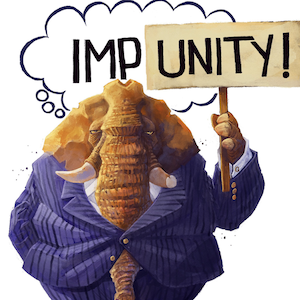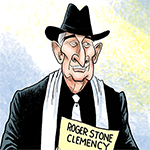Football at Fenway: UConn next to play in shadow of Green Monster
Published in Football
HARTFORD, Conn. — Millions have journeyed to Boston through the decades just to see Fenway Park. Regardless of one’s favorite team, a sporting life would not be truly complete without seeing baseball played in a ballpark opened in 1912 for that purpose and so tightly woven in its history.
But from the beginning, a grid was laid out when it was needed for football to be played in the shadow of the famous Green Monster, the 37-foot high left-field wall. And whatever the show, Fenway Park has a way of being the star as well as the stage.
UConn will be involved when Fenway is again dressed up for football, to play North Carolina on Saturday at 11 a.m. in the third Wasabi Fenway Bowl.
“It’s Fenway, it’s going to be awesome,” said Huskies coach Jim Mora, who recalls seeing a baseball game there in 1982. “I’ve been smiling since it was announced.”
The Red Sox owners were reluctant to risk tearing up their new diamond by renting the brand new ballpark out for football, but a few weeks after the team beat the Giants in the 1912 World Series they relented and agreed to open the gates for Boston English and Boston Latin to play their annual Thanksgiving Day game.
“Arrangements for laying out a football gridiron between left field and center field have been made and within a few days the field will be properly marked off and goalposts will be erected,” The Boston Globe reported on Nov. 12, 1912. “When the announcement was made at both schools that Fenway Park had been secured, the players and students unanimously voted to send the Boston club owners a vote of thanks.”
Due to a missed PAT, Boston Latin won the city’s championship, 7-6. But before that game was over, a powerhouse team from Oak Park, Ill., arrived in town in response to a challenge to play Everett High Malden in a battle of state champs. Fenway was made available for that game on Nov. 30 and more than 10,000 filled the bleachers, craning their necks to see the action at an odd angle.
Oak Park won, 32-14, “thereby capturing what many will regard as the national scholastic championship in football,” the Globe said. Two weeks later, Oak Park coach Bob Zuppke, a college football Hall of Famer, was hired by the University of Illinois.
So there it began. The field recovered sufficient for Tris Speaker, Smoky Joe Wood and the rest of the Red Sox to defend their title in 1913 and football at Fenway was deemed do-able. High school and college games were played their sporadically, and it later became the original home of the team now known as the Washington Commanders, home to a team called “The Yanks” that became the only NFL franchise ever to fold, and the Patriots for a time.
When football in baseball venues became fashionable again, UConn and Boston College played at Fenway in 2017 and the Fenway Bowl idea was hatched. The pandemic forced the first two to be canceled, but it is now established on the bowl season calendar.
Here’s a brief history:
College games
Boston College has played dozens of games at Fenway, often using it while their home stadium was being built or renovated, starting in 1915. In 1940, six years after the park was damaged by fire and renovated to take the footprint we know today, more than 40,000 packed the seats and the field to see the Eagles defeat Georgetown, which took a 23-game winning streak into the game. Rarely, Grantland Rice wrote, “do such heralded teams not only rise to the occasion but rise well above it in spectacular style.” BC won, 19-18, in what is considered one of the best college games of the 20th Century.
On Nov. 12, 1949, an illness left a game between Boston University and Maryland without a broadcaster. A 22-year-old Fordham grad named Vin Scully got his first big assignment, calling Maryland’s 14-13 victory before more than 3,000.
Braves, Yanks and Patriots
In 1926, a new league, the American Professional Football League, tried a team in Boston, the Bulldogs, but lasted only six games. Later, another fledgling circuit, the AFL, fielded the Shamrocks at Fenway
In 1933, George Preston Marshall was awarded a franchise in the more established NFL and first called it the Braves, the name of the NL baseball franchise, then joined the Lions and Bears in using a name close, but not identical to the baseball team in town and went with the Redskins. They played at both Fenway Park and Braves Field between 1933-37 before moving to Washington.
During the 1940s, the Boston Yanks joined the NFL, so named because owner Ted Collins really wanted to be in New York and use Yankee Stadium. During World War II, the team merged with the Brooklyn Tigers and were known simply as The Yanks. Neither successful on the field or at the Fenway box office, Collins asked the league to allow him to fold the franchise as a tax write-off, then he moved to New York as the Bulldogs. The franchise later became the Dallas Texans and the Baltimore Colts.
After two years at Boston University’s Nickerson Field, the AFL’s Patriots moved to Fenway in 1963, where future owner Robert Kraft first saw them play. To solve the sight-line problems, a deep bank of temporary bleachers were situated in front of the Green Monster, the field moved closer to the grandstand, running from home plate along the rightful line to Pesky’s Pole, and the teams located on the same sideline. The Patriots reached the championship game that year. Scheduling conflicts with the Red Sox became untenable, and the Patriots moved to BC, Harvard and finally their own place in Foxborough.
Back to school
Football was not played at Fenway for 47 years, but by the 2010s the “fish out of water” concept began to take hold, college and pro hockey was successful in large, outdoor arenas, Wrigley Field began hosting football, and Yankee Stadium got back in the football business, staging the Pinstripe Bowl. In 2015, Boston College and Notre Dame played at Fenway, drawing 38,686. ND won, 19-16, but the Fenway Sports Management like the idea and began opening the park up for high school and college football, including BC’s 39-16 win over UConn on Nov. 18, 2017.
The Fenway Bowl was born. Louisville defeated Cincinnati in 2022, BC defeated SMU in 2023. For this game, the American Athletic Conference, which has a tie-in with Fenway, was agreeable to an independent New England team, UConn (8-4), being invited to play the ACC’s rep, UNC (6-6), which has hired former Patriots’ coach Bill Belichick to take over its program next season. The venue, perhaps a precursor, was blanketed with snow the weekend before the game.
©2024 Hartford Courant. Visit courant.com. Distributed by Tribune Content Agency, LLC.







Comments